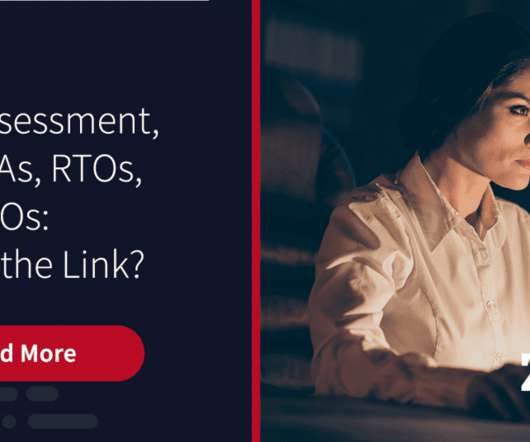Understanding Recovery Time Objectives: A Key Component in Business Continuity
Erwood Group
MAY 30, 2024
This proactive approach helps mitigate risks associated with operational disruptions. How RTO Impacts Business Continuity and Recovery 1. Business Impact Analysis (BIA) RTO is a critical component of Business Impact Analysis (BIA). To mitigate this, we perform a Financial Impact Analysis alongside the BIA.

















Let's personalize your content